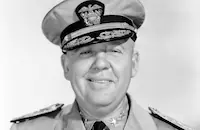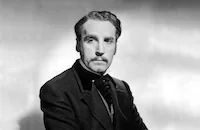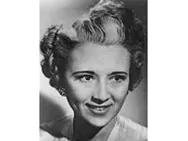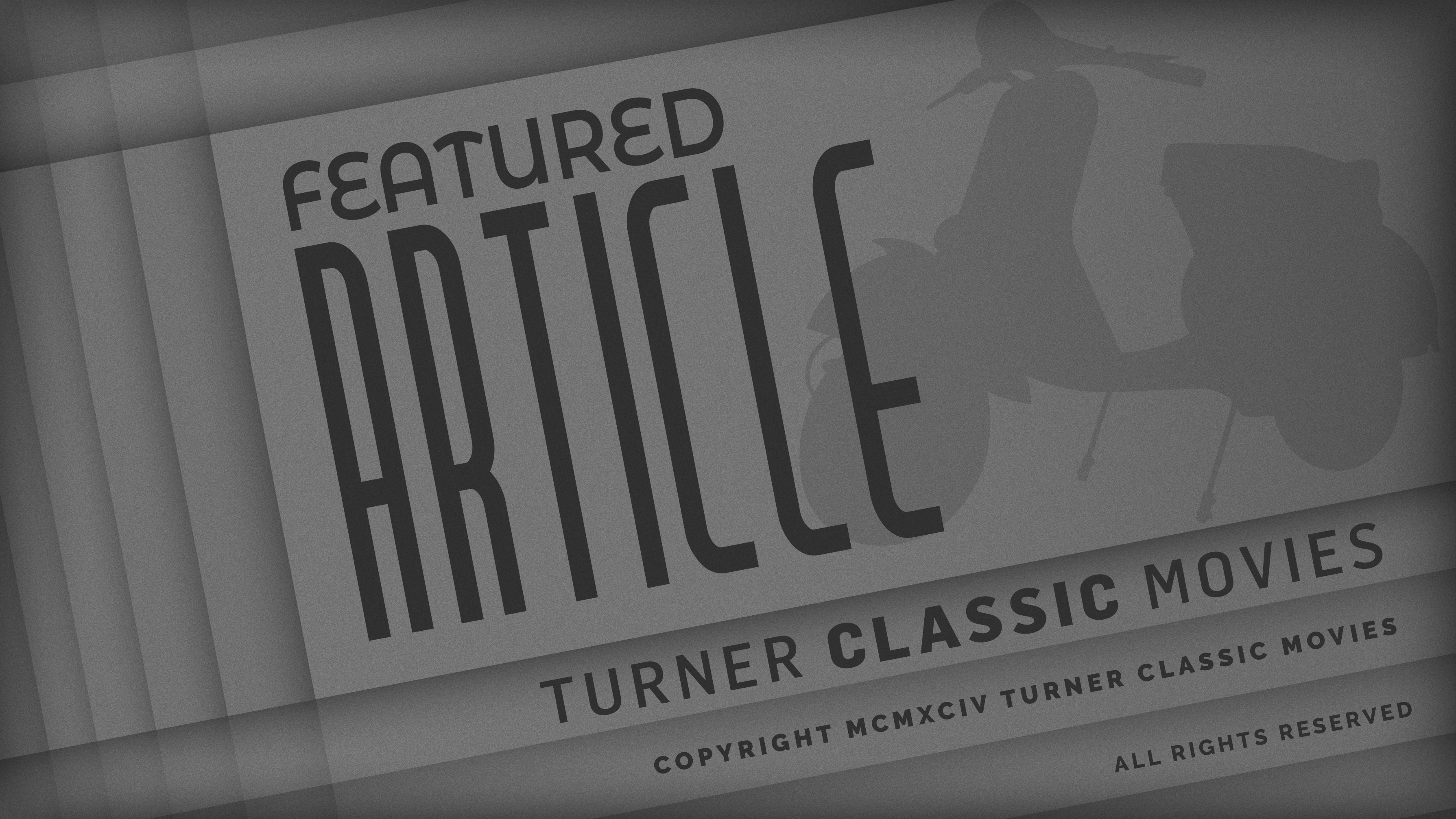Sir Wilfrid Robarts (Charles Laughton) is an aging barrister recovering from a heart attack. Against the advice of doctors and his nurse, played by Laughton's wife Elsa Lanchester, Sir Wilfrid decides to defend Leonard Vole. Vole (Tyrone Power) is on trial for the murder of a wealthy widow. His wife, Christine (Marlene Dietrich), is his only alibi, but Sir Wilfrid doubts whether she is telling the truth. Additionally, Christine reveals to Sir Wilfrid that she is not Leonard Vole's wife. She was already married when they met during the war in Germany. Ultimately Christine is called as a witness for the prosecution testifying Leonard admitted he killed the woman. But before the case can go to the jury, a mysterious Cockney woman calls Sir Wilfrid saying she has information to help his client. This sets in motion a series of twists leading up to the unexpected ending.
NOTE: A great deal of the fun and intrigue of Witness for the Prosecution lies in its triple twist ending. In order not to give the plot away to those who haven't seen it, we've posted SPOILER ALERTS before every paragraph that requires mentioning the surprise ending in order to more fully discuss the film's impact and appeal.
Director: Billy Wilder
Producer: Arthur Hornblow, Jr., Edward Small
Screenplay: Billy Wilder, Harry Kurnitz, and Larry Marcus. Based on the play by Agatha Christie.
Cinematography: Russell Harlan
Art Direction: Alexandre Trauner
Music: Matty Malneck
Cast: Tyrone Power (Leonard Stephen Vole), Marlene Dietrich (Christine Helm/Vole), Charles Laughton (Sir Wilfrid Robarts), Elsa Lanchester (Miss Plimsoll), John Williams (Brogan Moore), Henry Daniell (Mayhew), Ian Wolfe (Carter).
BW-117m. Letterboxed.
Why WITNESS FOR THE PROSECUTION is Essential
Many people forget that Witness for the Prosecution is a Billy Wilder picture. Audiences are more used to his earlier, more hard-edged film noirs Double Indemnity (1944), The Lost Weekend (1945), and Sunset Boulevard (1950). Or the sharp and breezy Audrey Hepburn comedies of the 1950s Sabrina (1954) and Love in the Afternoon (1957). Or the later acerbic takes on modern American life The Apartment (1960) and The Fortune Cookie (1966). Witness for the Prosecution was, in fact, almost not a Wilder film at all; he wasn't particularly inspired or challenged by the idea of converting Agatha Christie's hit mystery play into a movie and had several other projects brewing in his head, including his dream project, a picture about Sherlock Holmes (which he eventually completed in 1970 under the title The Private Life of Sherlock Holmes). He was finally talked into directing Witness for the Prosecution by Marlene Dietrich, who admired and enjoyed working with her old friend; the two knew each other since their days in Berlin and Wilder had guided her through one of her best roles in A Foreign Affair (1948). Dietrich also knew that with Wilder at the helm she had a greater shot at landing the role of Christine Vole. Eventually, Wilder agreed to take the job with the assurance he could adapt the film in his own style.
That's exactly what he did, imbuing it with his playfully cynical sense of humor while focusing on duplicitousness, double-dealing and deceptive appearances, familiar aspects of his work since his first American film, the Ginger Rogers comedy The Major and the Minor (1942). And he made the material his own while retaining the twisted mystery of the play. In fact, according to Wilder himself, Agatha Christie said it was the best film adaptation ever done of her work.
The director not only embellished the original with distinctive Wilder touches, he actually improved on the play, using various devices to undercut the static nature of most courtroom dramas. He gave the film, and the Old Bailey scenes specifically, active visual and verbal excitement through the use of fluid camera movements, flashbacks and the diverting subplot of Sir Wilfrid's need for constant medical attention. Indeed, much of the suspense of the film lies in whether the aged barrister will make it through the grueling trial with all his health problems, not to mention the constantly surprising turn of events. And Wilder also plays up the comedic aspects of Sir Wilfrid's love-hate relationship with his nurse Miss Plimsoll who tries to wean him from his beloved cigars and brandy.
In this, Wilder was ably assisted by film and theater veteran Charles Laughton, taking what had been essentially a supporting role on stage and turning it into the central performance. His Sir Wilfrid is a disobedient child at one moment and a wily legal professional the very next (sometimes both at once), and the delight and total commitment with which Laughton attacked the role are evident throughout the picture. The actor particularly shines in his verbal duels with his real-life wife Elsa Lanchester, who received excellent critical notices for her role as Nurse Plimsoll. You could even say he steals the film from such prestigious cast members as Marlene Dietrich and Tyrone Power, both of whom had been huge stars two decades earlier.
In casting the roles of Leonard Vole and Christine Helm, United Artists producer Arthur Hornblow, Jr. wanted an actor and actress for both Witness for the Prosecution and their next film, Solomon and Sheba (1959). William Holden was the first choice for Leonard, but he was unavailable. Billy Wilder and Arthur Hornblow then went to Tyrone Power who turned down the part. Other actors considered for the role included Gene Kelly, Kirk Douglas, Glenn Ford, Jack Lemmon, and even Roger Moore. Eventually, Tyrone Power accepted the role when he was offered both Witness for the Prosecution and Solomon and Sheba for $300,000 each. Before he could complete Solomon however, Power had a fatal heart attack and was replaced by Yul Brynner. Ava Gardner and Rita Hayworth were also considered for the role of Christine Helm.
Under Wilder's direction, Marlene Dietrich gave another distinctly original performance in Witness for the Prosecution. She had started as the muse of director Josef von Sternberg in a series of memorably erotic and lushly pictorial films of the 1930s, among them The Blue Angel (1930), Shanghai Express (1932), and The Scarlet Empress (1934). From these movies emerged an image of an enigmatic woman of often-dubious background who lived for the pleasures of the flesh and the heart. After dissolving her partnership with von Sternberg, Dietrich's career had its ups and downs, and she was forced to redefine herself frequently while retaining the essential Dietrich mystique. Her role in Witness for the Prosecution traded on Dietrich's public and professional image while giving her a chance to display an acting range that surprised and impressed many critics and filmgoers.
With all the attention the film has received for its great ensemble acting, the work of designer Alexandre Trauner also deserves equal praise. Since the production was not allowed to use the actual Old Bailey courthouse in London, Trauner undertook the challenge of recreating it on a soundstage of the Goldwyn Studio in Hollywood. He was not even allowed to shoot stills inside the building, so he made many detailed sketches. Built to scale, complete with a 22-foot-high ceiling and using either Austrian oak or mahogany (studio publicity is contradictory), the set cost $75,000 and was exact down to the minutest detail. Still, Trauner remarked with characteristic modesty, "The reality is better than the fake."
Witness for the Prosecution was an expensive film to make. The film rights to Agatha Christie's hit play cost a whopping (for the time) $435,000. Power was paid $150,000 for his work, and Dietrich $100,000. (By contrast, Laughton, who stole the picture and got the most critical attention, was paid only $75,000.) Designer Alexandre Trauner's meticulous recreation of London's Old Bailey courthouse also drove costs up considerably. Nevertheless, the film was a big hit with audiences and brought in $4 million at the box office.
Witness for the Prosecution was nominated for six Academy Awards. Charles Laughton was nominated for Best Actor and Elsa Lanchester for Best Supporting Actress. The film was also nominated for Best Picture, Director, Sound, and Editing. And here we must insert a SPOILER ALERT before continuing for anyone who hasn't seen the film yet! Marlene Dietrich did not receive a nomination but many of her fans believe she deserved one for her dual role as Christine Helm and the Cockney woman. It's not until near the end of the film that Sir Wilfrid and the audience learn Christine was the mysterious woman. According to Steven Bach in Marlene Dietrich: Life and Legend, "Wilder went for surprise rather than the possibly confusing suspense of knowing Christine was up to something. The decision remains controversial.
Marlene's Cockney is widely thought to have gone unappreciated because realized only after the fact. Dietrich supporters claim Wilder's decision cost her an Academy Award nomination, though there are those who insist, even today, that the Cockney isn't Dietrich at all."
By Rob Nixon & Deborah Looney



































